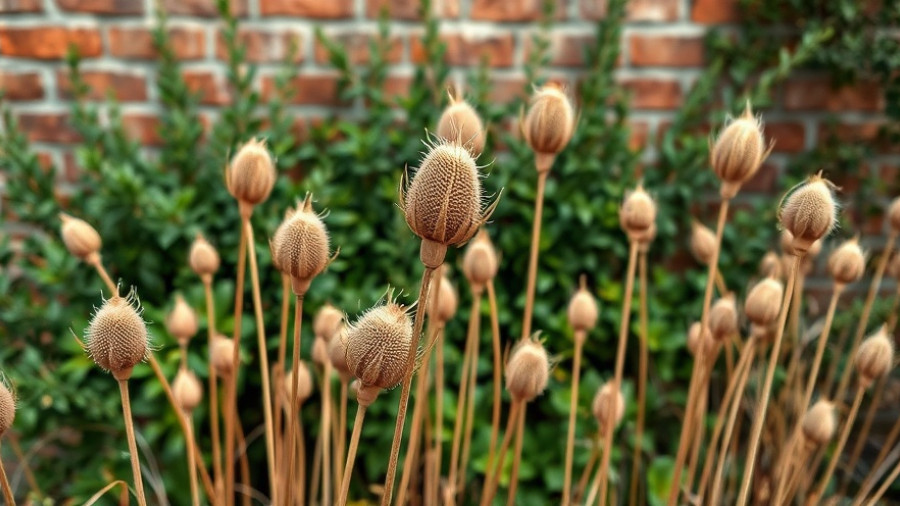
Transforming Your Garden: The Power of Winter Seedheads
As winter approaches and landscapes become dreary, many gardeners ponder the ritual of tidying up, trimming back the fading blooms, and clearing out the dead foliage. However, a fresh perspective is emerging that champions the beauty and utility of leaving seedheads standing in our gardens. Not only do these skeletal forms add unique texture during the cold months, but they also provide crucial resources for local wildlife, reinforcing the symbiotic relationship between our gardens and the ecosystem.
Why Leave Seedheads in Your Garden?
The movement to leave seedheads intact over winter is buoyed by several environmental benefits. Wildlife enthusiasts and professional gardeners alike are advocating for practices that prioritize biodiversity and sustainability.
- Wildlife Benefits: Many seedheads serve as a food source for birds and other wildlife during the harsh winter months. For instance, birds thrive on seeds from plants like sunflowers and cornflowers, providing them essential nutrition when other sources are scarce.
- Soil Protection: Allowing seedheads and foliage to remain in the garden not only enriches the soil as it decays but also insulates roots from frost—potentially saving your flowering perennials from winter damage.
- Less Work: Surprisingly, leaving seedheads reduces garden maintenance. There’s less to clear away in the spring since much organic matter will naturally decompose, enhancing soil health.
Stunning Seedheads to Consider
When deciding which plants to keep for their aesthetic and ecological value, consider incorporating some of the following:
- Hydrangeas: Their dried flower heads maintain their form well into winter, resembling delicate sculptures dusted with frost.
- Alliums: With their globe-like structures, allium seedheads add height and drama to winter landscapes.
- Teasels: These are not only visually striking but offer a favorite dining spot for hungry birds seeking seeds.
- Angelica: A tall perennial that draws ladybirds and birds alike.
- Miscanthus grass: This ornamental grass provides elegant movement in winter breezes while supporting local pollinators.
Encouraging Biodiversity in Your Garden
Implementing practices that support wildlife in gardens doesn’t end with leaving seedheads. Effective winter gardens can be achieved by also retaining other organic materials. For instance, consider:
- Leaving Leaf Litter: This provides protection for insects and can help enrich soil over time.
- Creating Brush Piles: Gather unused branches and leaves in a pile to form a little ecosystem for insects and small mammals.
- Installing Logs: Utilizing fallen logs or branches can create new habitats for diverse species, from beetles to tiny frogs.
By applying these techniques, you’ll not only contribute to the health of local wildlife but also witness your garden blooming with life even in the harshest weather.
A Shift in Gardening Mindset
Ultimately, transitioning from a ‘tidy’ garden to one that embraces natural decay may require a mindset shift for some gardeners. Instead of viewing dead materials as clutter, consider them decorative features that highlight the season’s beauty. From stark forms to glistening frost, each seedhead holds a story of nature that is often overlooked.
So next winter, resist the urge to reach for the secateurs, and instead revel in the beauty that your garden offers. Beyond just aesthetics, taking a hands-off approach can foster an appreciation for the wildlife that calls your garden home, helping to create a vibrant ecosystem year-round.
Invite Local Wildlife into Your Home
Are you ready to transform your garden into a haven for wildlife and embrace the unique beauty of winter? Consider giving these practices a chance this season. Watch your space flourish with life and assume a role in nurturing your local ecosystem. For those seeking more guidance on building a wildlife-friendly garden, consult local experts or gardening communities for resources and ideas that will inspire your next garden project.
 Add Row
Add Row  Add
Add 




Write A Comment